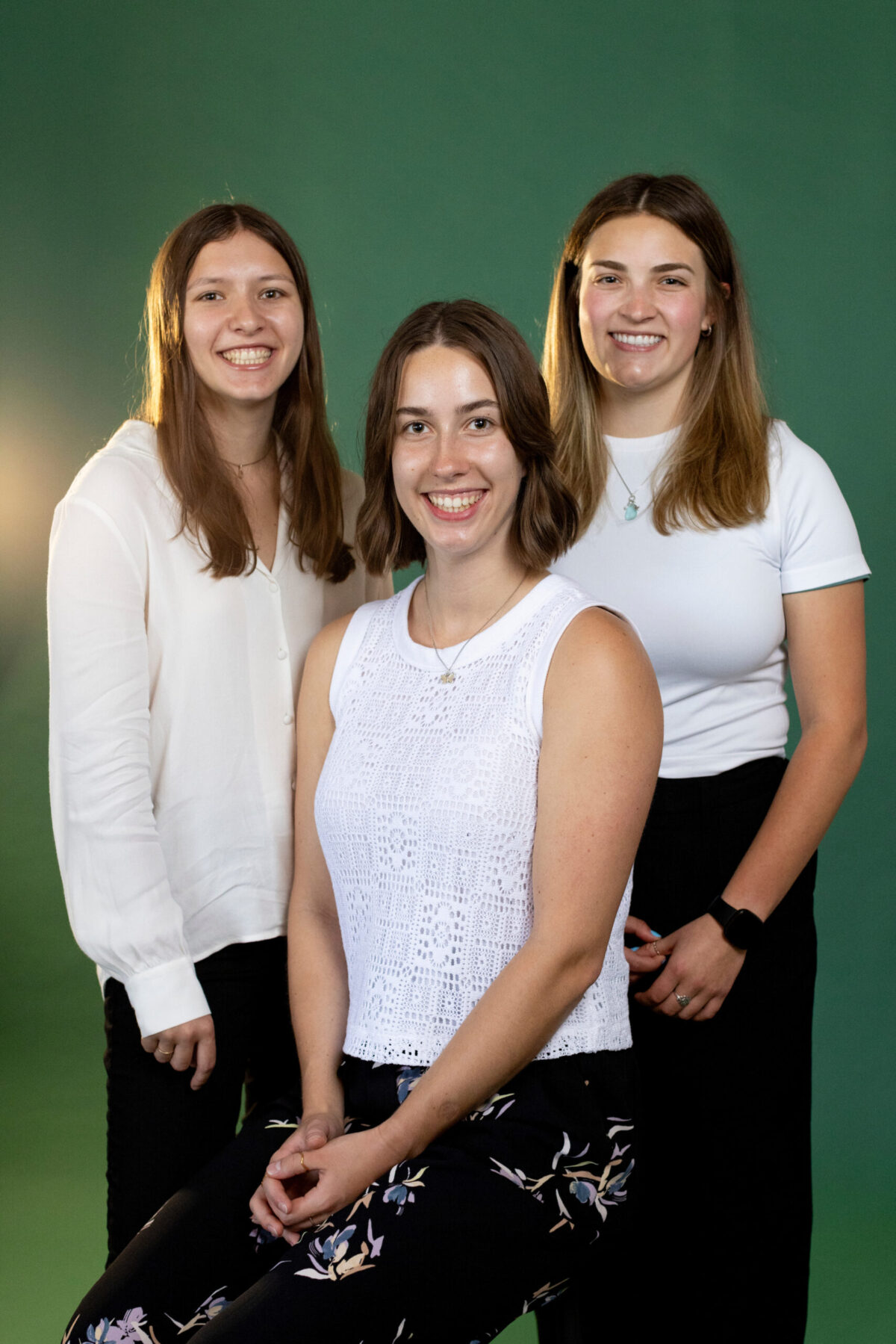A safer delivery: How Infantry Obstetrics is addressing shoulder dystocia

When recent California Polytechnic State University (Cal Poly) biomedical engineering graduate Jenna Eissmann first shared her startup with her friends, she had no idea how deeply it would resonate.
She described her startup, Infantry Obstetrics, and their mission to prevent shoulder dystocia injuries. Shoulder dystocia is a condition where a baby’s shoulder gets stuck during childbirth, often resulting in serious injuries like clavicle fractures and brachial plexus injury.
To Eissmann’s surprise, she discovered one of her good friends suffered from shoulder dystocia as a baby and subsequently had her collarbone broken by the doctor in order to be delivered.
That moment made Eissmann’s work proudly personal.
“Hearing about the struggles my friend went through to recover from her injury made me realize the real-world impact our innovation could have,” Eissmann said. “I see the effects of this condition today and can’t wait to see what our solution can do in the future.”
Infantry Obstetrics, founded on the principle of transforming women’s health, is driven by stories like these. For Eissmann, her friend’s experience serves as a powerful reminder of why their work matters and fuels their dedication to creating a safer future for mothers and babies alike.
Infantry Obstetrics is creating a new method to treat shoulder dystocia with their handheld device. Their device works with the mother’s anatomy to gently wrap around the infant’s upper body.

SAN LUIS OBISPO, CA: (From left to right: Jenna Eissmann, Rachel Rowe, Maddie Mumford) The Infantry during Cal Poly’s Center for Innovation and Entrepreneurship (CIE) CIE Summer Accelerator photo session on June 06, 2024 in San Luis Obispo, California. Photo by Ruby Wallau for CIE
“Maddie Mumford, Rachel Rowe and I were all in the same senior project group. After working together for two quarters, we realized we work really well together – and we like each other! We knew we had something here, so we wanted to continue developing this device,” said Eissmann.
Biomedical engineering graduate and co-founder Rachel Rowe holds a part-time remote position as COO, supporting from a logistical standpoint and helping with research.
Biomedical engineering graduate and co-founder Maddie Mumford works in a hybrid remote position full-time as CFO and focuses on research, financial projection forecasts and their regulatory strategy. Mumford will be pursuing her master’s in biomedical engineering at Cal Poly in the fall of 2024.
Eissmann holds a full-time in-person position as CEO and is in charge of handling programming, running in-person testing with the device and catching Rowe and Mumford up to speed on the day-to-day happenings. Eissmann will be pursuing her master’s in engineering management at Cal Poly in fall 2024.
The team joined the Center for Innovation and Entreprenuership’s (CIE) Summer Accelerator program because, as engineers, they felt confident in the design and technical aspects of building their startup, but needed support with the business-side, they said.
The Accelerator is an intensive 12-week program that provides Cal Poly students and recent graduates with the resources necessary to turn their innovative ideas into full-fledged startups.
Participants in the Accelerator receive $10,000 in seed funding, as well as access to expert mentorship, entrepreneurial workshops and a dedicated workspace in the HotHouse, the CIE’s office located in downtown San Luis Obispo.
Currently, the only methods to address shoulder dystocia involve hand maneuvers, which have a 58% failure rate and lack a standardized approach, Eissmann explained. Infantry Obstetrics is working to change this with their device.
Infantry Obstetrics is currently in the product development phase and is consulting with obstetrics and gynecology (OBGYN) partners to gather feedback and refine their design.
In the future, the team hopes to finalize their product design, test the device in real-world settings, apply for a patent, attract investors and form a corporation.
“While the numbers don’t seem incredibly common, shoulder dystocia affects more people than you’d expect,” Eissmann explained. “It’s 2024. Women’s health really needs an intervention to help both mothers and babies. Our device is something that’s made for women by women, and I think that’s really powerful.”
About the Cal Poly Center for Innovation and Entrepreneurship:
The CIE opens a world of entrepreneurial opportunity to Cal Poly students, faculty and community members and promotes entrepreneurial activity and dialogue across the university and throughout San Luis Obispo County. For more information, visit cie.calpoly.edu.
# # #